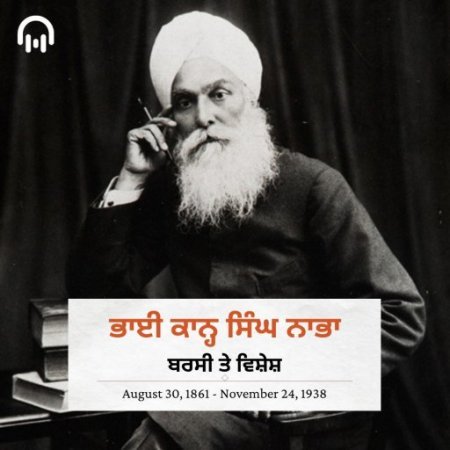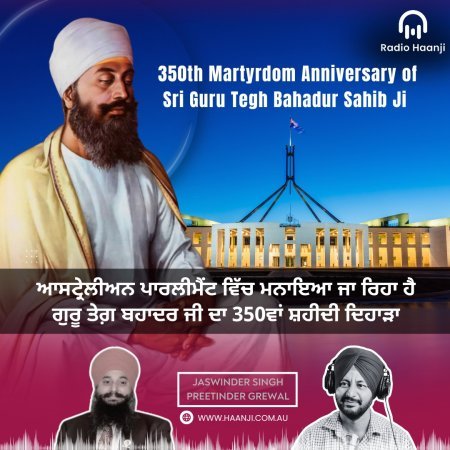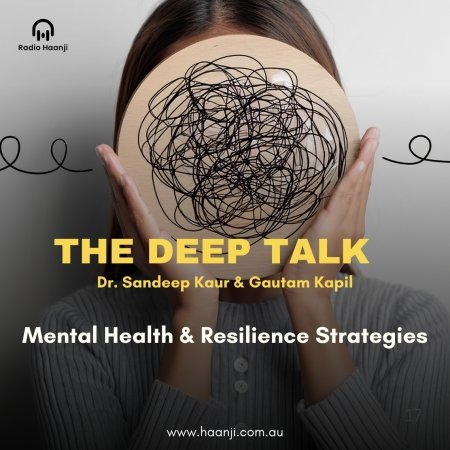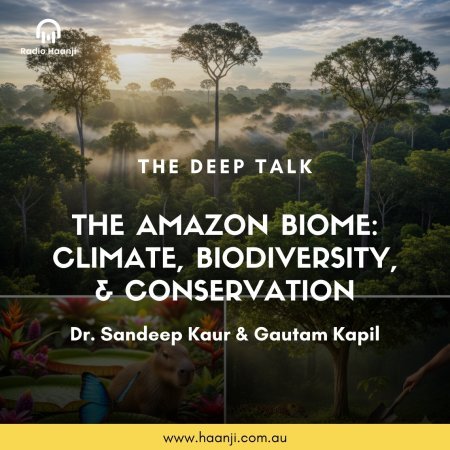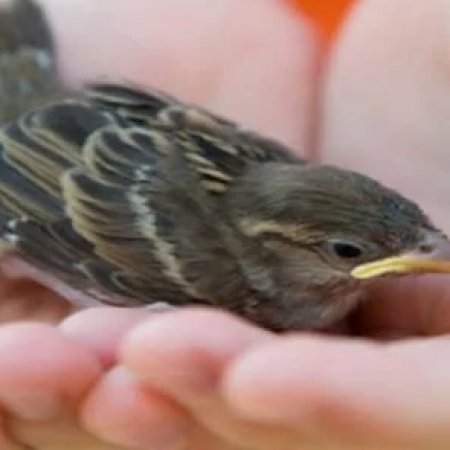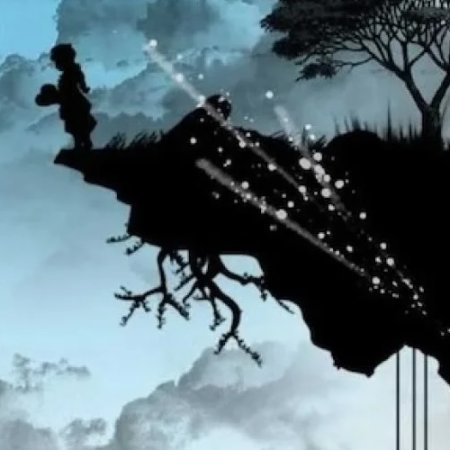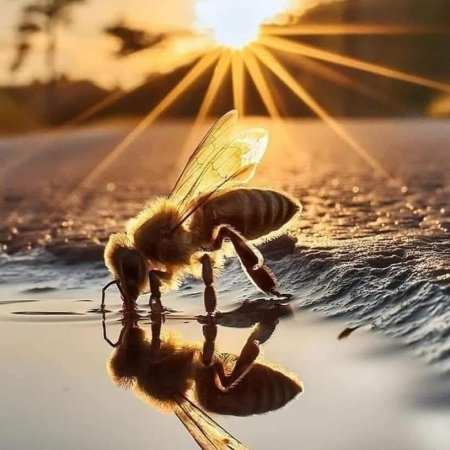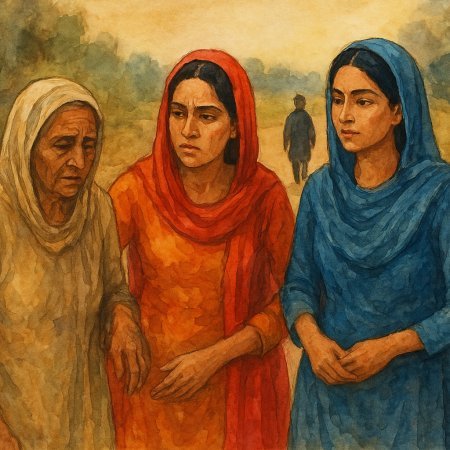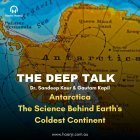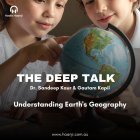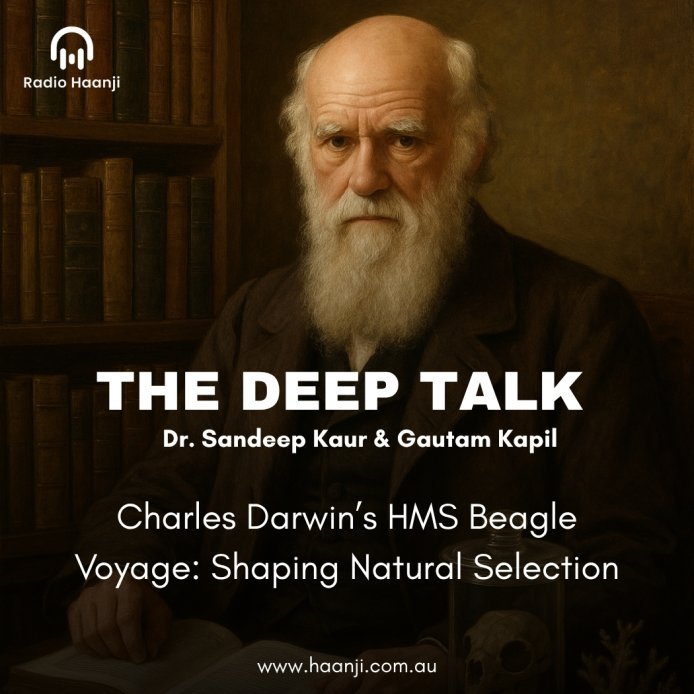
Charles Darwin’s HMS Beagle Voyage: Shaping Natural Selection
Host:-
 Dr. Sandeep Kaur
Dr. Sandeep Kaur
 Gautam Kapil
Gautam Kapil
Discover how Charles Darwin’s HMS Beagle voyage led to his theory of natural selection. Explore his impact on biology and hear more on Radio Haanji’s The Deep Talk
Table of Contents
-
Who Was Charles Darwin?
-
The HMS Beagle Voyage: Key Stops and Discoveries
-
South America: A Treasure Trove of Diversity
-
Galapagos Islands: A Living Laboratory
-
Australia: Unique Wildlife
-
-
Developing the Theory of Natural Selection
-
Publishing On the Origin of Species
-
Impact on Biology and Society
-
Insights from Radio Haanji’s The Deep Talk
-
FAQs About Charles Darwin and His Theory
Who Was Charles Darwin?
Charles Darwin, born February 12, 1809, in Shrewsbury, England, is widely regarded as history’s most influential biologist. His five-year voyage on the HMS Beagle from 1831 to 1836 sparked his theory of natural selection, fundamentally changing our understanding of life’s diversity. As a science enthusiast, I’ve explored how Darwin’s work continues to inspire, a topic recently discussed on Radio Haanji’s The Deep Talk, hosted by Dr. Sandeep Kaur and Gautam Kapil. From a young naturalist to a scientific icon, Darwin’s journey shows how curiosity can reshape science. His passion for observation led to discoveries that remain relevant today.
The HMS Beagle Voyage: Key Stops and Discoveries
On December 27, 1831, 22-year-old Charles Darwin joined the HMS Beagle as its naturalist for a mission to chart South America’s coast. The voyage, lasting until October 2, 1836, covered Brazil, Argentina, Chile, the Galapagos Islands, Tahiti, New Zealand, and Australia. Darwin collected over 5,000 specimens, including fossils, plants, and animals, filling dozens of notebooks with observations on geology and biodiversity. These findings challenged the idea of fixed species and laid the foundation for his theory of natural selection American Museum of Natural History.
South America: A Treasure Trove of Diversity
In South America, Darwin explored Brazil, Argentina, and Chile, collecting fossils of extinct mammals like Megatherium. These discoveries suggested species could change or vanish over time, contradicting the belief that species were immutable. In Brazil, he marveled at the rainforest’s diversity, noting “gaily-coloured” flatworms and spiders, though he was disturbed by local slavery and parasitic wasps, which raised questions about nature’s design Britannica.
Galapagos Islands: A Living Laboratory
In 1835, Darwin spent five weeks in the Galapagos Islands, observing variations among species like finches and tortoises. Finch beak shapes varied by island, reflecting dietary adaptations, while tortoise shell shapes indicated their island of origin. These observations suggested species adapted to their environments, a cornerstone of natural selection National Geographic.
Australia: Unique Wildlife
In January 1836, the Beagle reached Sydney, and Darwin traveled to Bathurst, observing unique Australian wildlife like kangaroos, platypuses, and potoroos. These species, distinct from European counterparts, led him to question whether a single creator would design such varied forms for similar roles. His diary entries, including notes on antlions, reflect early evolutionary thoughts, as noted in a 2023 study on Australia’s isolated ecosystems The Conversation.
Question: What did Charles Darwin observe in Australia during the HMS Beagle voyage?
Answer: Darwin observed unique wildlife like kangaroos and platypuses, which challenged European species classifications and sparked early ideas on evolution.
His global observations provided critical evidence for his revolutionary theory.
Developing the Theory of Natural Selection
Upon returning to England, Darwin analyzed his specimens, noting patterns in species variation. Influenced by Charles Lyell’s Principles of Geology, which argued for gradual geological changes over vast time, he realized evolution required deep time. Thomas Malthus’s 1798 essay on population growth, highlighting competition for limited resources, inspired Darwin to apply this “struggle for existence” to all species. By 1838, he formulated natural selection: organisms with advantageous traits survive and reproduce, passing those traits to offspring. A 2020 study estimates his notes covered over 1,500 species, reflecting his rigorous approach Biology LibreTexts.
Question: How does natural selection work?
Answer: Natural selection is the process where organisms with traits suited to their environment survive and reproduce, passing those traits to future generations, driving evolution.
Darwin’s synthesis of observation and theory created a scientific milestone.
Publishing On the Origin of Species
On November 24, 1859, Darwin published On the Origin of Species by Means of Natural Selection, presenting evidence from his voyage and research. The book introduced concepts like common ancestry and descent with modification, explaining biodiversity. Its first 1,250 copies sold out immediately, and it has been translated into over 30 languages. Despite sparking controversy for challenging religious views, it became a cornerstone of biology History.com.
Question: Why is On the Origin of Species important?
Answer: It introduced evolution by natural selection, offering a scientific explanation for biodiversity and reshaping modern biology.
Impact on Biology and Society
Darwin’s theory of natural selection underpins modern biology, influencing genetics, ecology, and paleontology. It proposes humans share a common ancestor with primates, redefining our understanding of human origins. A 2021 study found 97% of biologists accept evolution as fact, though some religious groups advocate creationism, fueling ongoing debates. Darwin’s ideas also sparked philosophical discussions about humanity’s place in nature, celebrated annually on Darwin Day, February 12 PMC.
His work continues to drive scientific inquiry and cultural discussions.
Insights from Radio Haanji’s The Deep Talk
Radio Haanji 1674 AM, Australia’s leading Indian radio station, featured Charles Darwin’s legacy on The Deep Talk. Hosted by Dr. Sandeep Kaur, a biologist, and Gautam Kapil, a science communicator, the show explored how Darwin’s observations, including Australia’s unique wildlife, shaped his theory of natural selection. They emphasized its relevance in modern education and cultural contexts. Tune in via Radio Haanji’s mobile app or 1674 AM at https://haanji.com.au/podcast/the-deep-talk to explore more science topics. Share your thoughts on Darwin’s impact in the comments!
The Deep Talk connects Darwin’s discoveries to today’s audiences.
FAQs About Charles Darwin and His Theory
1. When did Charles Darwin sail on the HMS Beagle?
He sailed from December 27, 1831, to October 2, 1836, on a five-year global expedition.
2. What is the main idea of Darwin’s theory of natural selection?
Organisms with traits best suited to their environment survive and reproduce, passing those traits to offspring, leading to species evolution.
3. How did Darwin’s work contribute to human evolution studies?
He proposed humans share a common ancestor with primates, providing a scientific framework for studying human evolution.
4. What controversies surround Darwin’s theory today?
While widely accepted in science, some religious groups challenge it, favoring creationism or intelligent design.
5. How can I listen to The Deep Talk on Radio Haanji?
Tune in via the mobile app or 1674 AM at https://haanji.com.au/podcast/the-deep-talk.
6. What did Darwin observe in the Galapagos Islands?
He noted variations in species like finches and tortoises, suggesting adaptation to specific island environments.
7. Why is Charles Darwin considered a pioneer in biology?
His theory of natural selection explained biodiversity, revolutionizing biology and related fields.
Darwin’s voyage and ideas continue to inspire curiosity about life’s diversity. Subscribe to our newsletter for more science insights or explore Radio Haanji for engaging discussions!
External Links:
- Darwin Online for Darwin’s complete works and manuscripts.
- Natural History Museum for insights on Darwin’s legacy.
- The Conversation for details on Darwin’s Australian observations.
- History.com for information on On the Origin of Species publication.
- Biology LibreTexts for influences on Darwin’s theory.
What's Your Reaction?




















